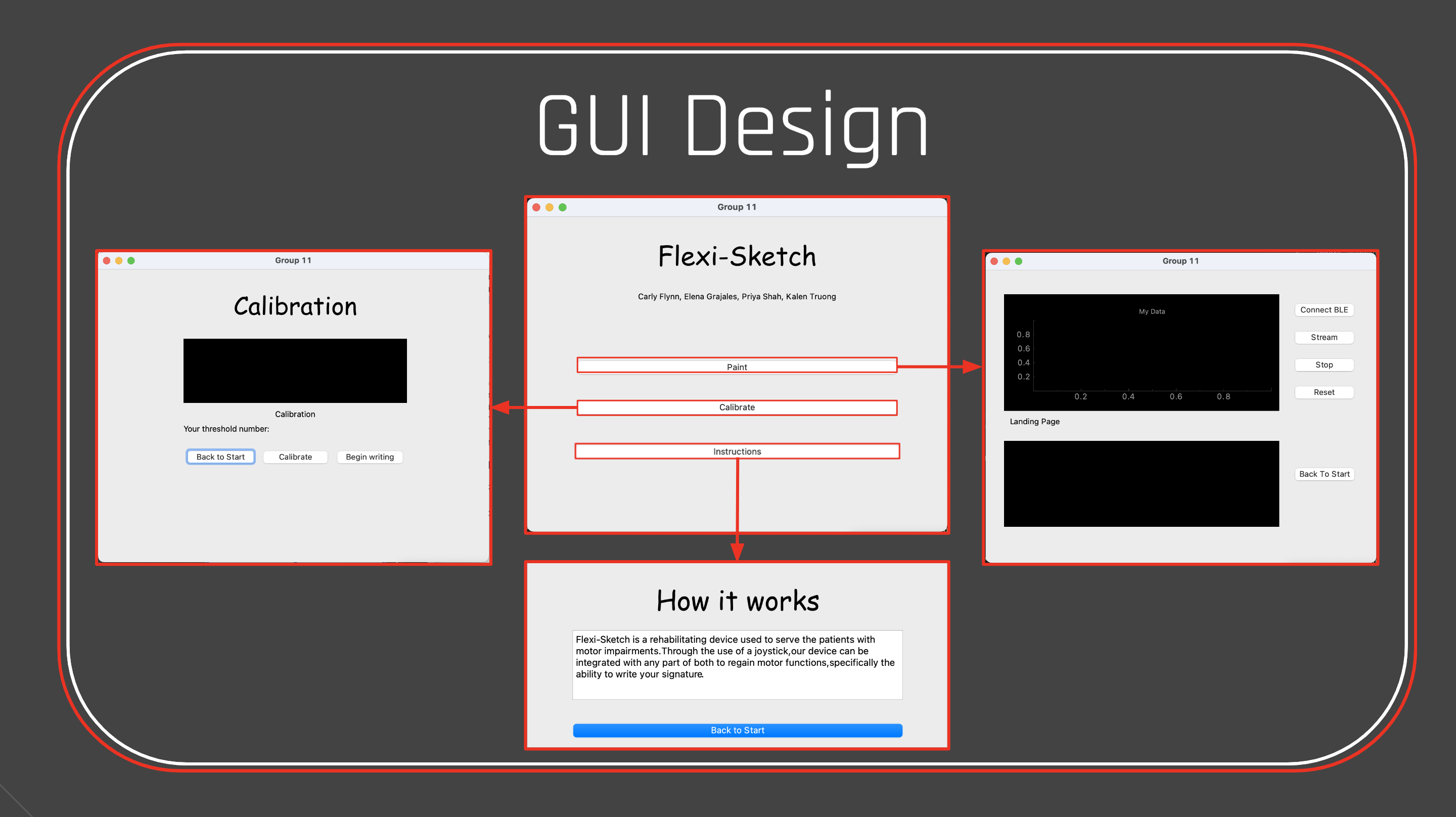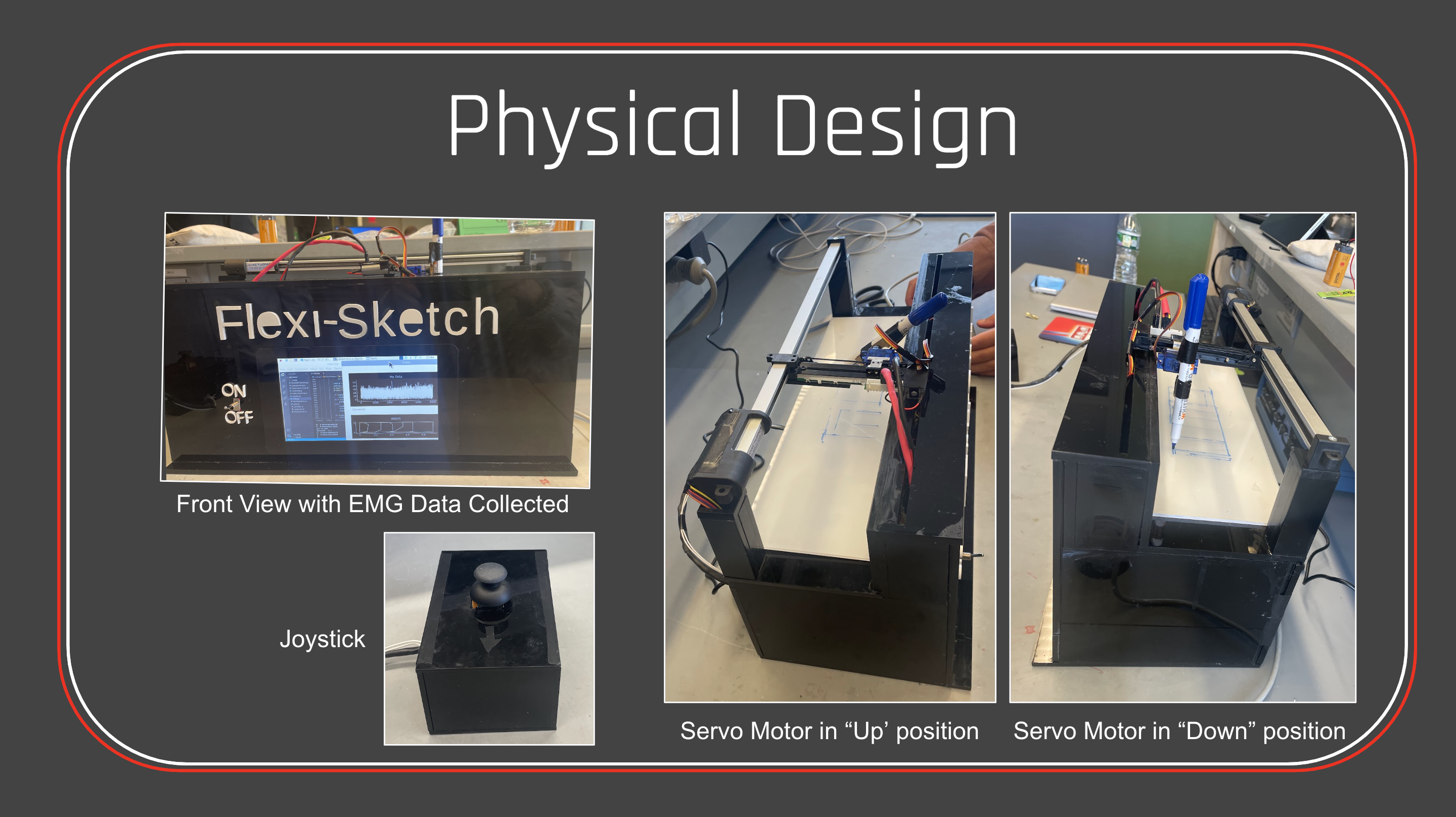Flexi-Sketch
Python, EMG, Raspberry Pi, Slide Potentiometer, DC Motor
Flexi-Sketch is a robotic arm controlled by a joystick controller, tailored for users with upper limb motor impairments. By simplifying the degrees of freedom to just two, Flexi-Sketch allows for precise writing and drawing. I collaborated on this project with three teammates in our Modeling, Analysis, and Design II course, where I was the primary programming contributor. Electromyography (EMG) signals were collected from users to interface their body movements with the robotic arm, ensuring an intuitive and responsive experience.
Background
In the United States, an estimated 39 million individuals suffer from motor impairments. To address this need, we developed a rehabilitating device for upper limb motor impairments using EMG signals and motor control. By leveraging EMG as an input switch, we created Flexi-Sketch, a device designed to replicate normal hand motor functions and enable users to perform everyday tasks, such as drawing and writing.
Design


Flexi-Sketch is a wireless medical device designed to operate seamlessly on a Raspberry Pi, featuring a simple and intuitive user interface. With a single click for calibration, the device adjusts to the user's EMG signals, allowing for precise and personalized writing and drawing activities. Additionally, the EMG signals and drawing screen are displayed directly on Flexi-Sketch.